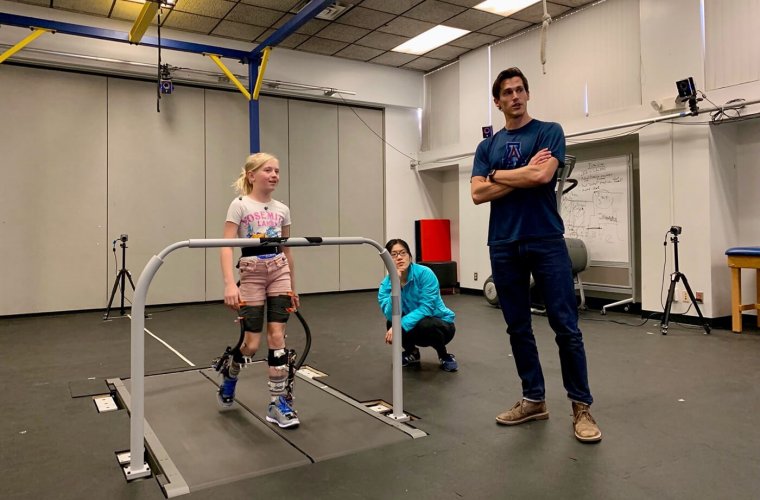Researchers Developing Fanny Pack Exoskeleton To Improve Walking In Children With Cerebral Palsy
Benjamin Conner, a researcher at the University of Arizona, and his team are working on developing new ways children with Cerebral Palsy can train their brains to learn effective ways to walk, ultimately allowing them to be a lot more independent as they grow older and move into adulthood.
The fanny pack powered exoskeleton, that’s worn on the waist, consists of motors and steel cables that are attached to a pulley at the ankle. As a child walks, the motors are able to help with the movement by increasing or decreasing resistance. This serves a variety of purposes – first, it serves as an assistive feature designed to make walking easier for kids with Cerebral Palsy. The exoskeleton works in tandem with the muscles and helps with a more normal and natural walking pattern. Second, it also acts as a therapeutic intervention and helps with retraining the brain to adapt to a more natural walking movement. In this mode, the exoskeleton is designed to not assist, and makes walking a bit difficult for the children by adding resistance. The harder the children push, the more resistance the exoskeleton adds. This helps children with CP to build muscle memory and strengthen their muscles, ultimately training their brain to adapt to a more steady walking pattern.
Current treatment for people with CP includes muscle or nerve injections, oral relaxants, physical therapy and orthopedic surgery. This exoskeleton will work to supplement these methods. It is still being developed in the College of Medicine’s lab and the team hopes to make it commercially available to families in the future.
Read the source link for more information on this exoskeleton.
Source: Ktar News, University of Arizona
Image Gallery:




Leave a comment